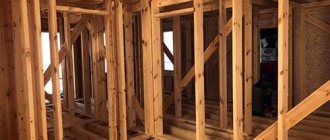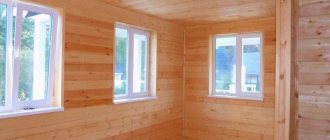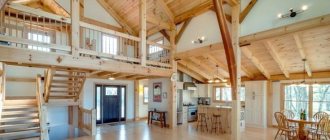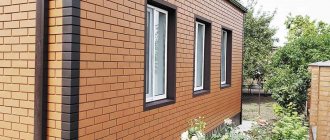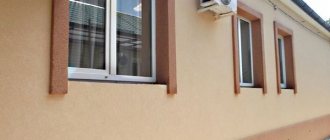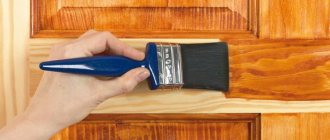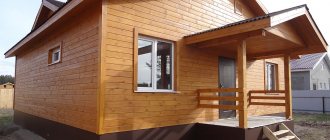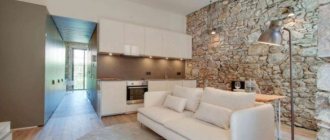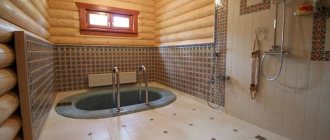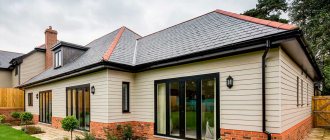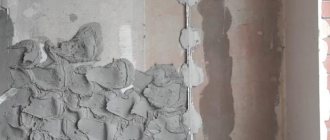When you start renovating an apartment, many questions arise that affect not only design, but also materials, types of finishing, installation processes and much more. Below we discuss common methods and types of interior wall decoration, as well as their advantages and disadvantages.
view album in new window
Review of materials for interior wall decoration
To decorate industrial premises, materials with a certain “set” of performance qualities are used - vibration resistance, resistance to acid and alkali, etc. Let’s leave the industry alone for now and consider the properties and characteristics of materials that are most often used in such a technological process as interior decoration private house.
The composition, technology of application, and performance require finishing the walls of a room from any material and any size.
According to their design features and method of application, all finishing materials are divided into groups:
- plastering;
- paint and varnish;
- tiled;
- roll;
- rack and pinion
It should be noted that the materials of the plaster group, which are often used to decorate the interior of a brick house, are practically not used in the decoration of wooden walls. Wallpaper (roll group) and painting require a pre-prepared surface, which is why there is a direct connection with the plaster and lath groups. Decorating the inside of a house is a set of activities, which we will analyze into components and consider in detail.
Start of finishing the room
Our offers
The MosKomplekt company carries out finishing work on private houses, apartments and public buildings. By contacting us, you will receive a beautiful, cozy home, the design of which will meet all the requirements of reliability and environmental safety.
We do not charge a fee for specialists to take measurements and assess the conditions of work. Our specialists carry out both individual types of work and turnkey finishing of apartments and houses.
The total cost of repair and finishing services depends on many factors and is calculated after specifying the scope of work. We have affordable prices and an individual approach to each client. Estimated cost of turnkey finishing:
- Cosmetic repairs – from RUB 2,500/m2.
- Major repairs – from RUB 5,800/m2.
- Elite renovation (European-quality renovation) – from RUB 7,900/m2.
You can submit an application by phone, email, on the website or by visiting our office.
Types and composition of plaster: choosing the material
In addition to leveling the surface, plaster, as a building material, performs protective and decorative functions. In work processes, there is often a need to maintain cleanliness, and the flat and smooth surface of a plastered wall with minimal dust formation fits well with sanitary requirements and standards.
Plastering has a long history. In the southern regions, in desert and semi-desert climatic zones, where there is almost no forest area, houses were built from clay and plastered with clay. Clay plaster - a mixture of clay, sand and fine straw - held the masonry together and served as protection from external factors. For interior decoration, horse manure was added to this plaster for reinforcement and insulation. Now this finishing method has been forgotten, although, in fact, it is the most environmentally friendly plaster, consisting of natural ingredients.
According to the technology of execution, plaster is divided into two types:
- monolithic (wet) plaster – plastering with a mixture of various water-based components;
- dry plaster – installation of ready-made sheets or slabs.
Wet (monolithic) plaster
The main advantage of wet plaster is its versatility, since it is used to level almost any surface. Regardless of the type of wet plaster, the principle of its application is practically the same. Another significant “plus” is time-tested durability. The disadvantage of working with types of plaster is the length of the process, increased humidity in the room during work, and an increase in the weight of the structure being leveled.
Water-based plaster mixture has two varieties - ordinary plaster and decorative.
- Ordinary plaster
is used to provide a smooth and even base for applying the finishing layer - painting, wallpapering, laying tiles or installing decorative plaster. Depending on the type of the main binding element, the leveling mixture can be cement, gypsum or lime. - Decorative plaster
is used to give a surface a decorative appearance and is considered a finishing coating. The composition of the material and the technology of the work suggest many options for textures and colors, which are limited only by your imagination.
Application of decorative plaster
In addition to the common types - colored, stone, terrazite, Venetian and artistic (sgraffito) - decorative plasters include liquid wallpaper. Liquid wallpaper is a mixture consisting of natural, environmentally friendly components: silk, cotton fibers and cellulose. The mixture is applied in a thin layer of 1-2 mm and is ready for use in at least a day.
To better understand the plastering process, let's look at all the stages:
- Surface preparation. The base for plaster must be cleaned of dust and primed to improve adhesion (adhesion of materials).
- To facilitate and speed up the work, we place plaster beacons in the same plane and level (maintain a strict vertical) - these can be either metal or wooden guides. Beacons are not installed under decorative plaster. The base is pre-leveled with ordinary cement or gypsum plaster.
- Using a construction ladle or trowel, apply cement mortar to the wall and level it using a flat aluminum or wooden lath. Gypsum putty is more viscous, so it is applied to the wall with a spatula.
- As the plaster dries, it is advisable to remove the beacons, and seal the grooves formed during removal with a solution of identical composition.
Note! Before plastering with cement mortar, it is enough to wet the wall with water. It cannot be treated with a primer - cement, not having adhesive properties, will settle on the film created by the primer. Over time, the plaster may peel off from the base.
When decorating the interior of a wooden house, cement plaster is almost never used. Lime and gypsum plaster are applied to the wall only after special preparation, which consists of constructing a mesh frame of thin wooden strips - shingles. Modern materials have replaced this technology from the finishing process, leaving it to lovers of antiquity and fans of environmentally friendly construction.
Wall alignment
Dry plaster: advantages and disadvantages
Already in the middle of the last century, the use of dry plaster was practiced on construction sites in the USSR. The interior finishing technology of that time involved the use of two types of material - uncoated molded gypsum fiber and gypsum covered with cardboard. Today, a second version of dry plaster – plasterboard – has become widespread in construction work.
Drywall consists of two layers of thick paper and one layer of gypsum (paper + gypsum + paper). To give the material certain qualities - fire resistance and moisture resistance - special polymer additives are introduced into the gypsum mixture.
The name “dry plaster” implies an alternative to the classic “wet” plaster. The properties of the material make it possible to use drywall where the use of the wet method is impractical in terms of time and costs or is structurally undesirable (interior decoration of a wooden house).
Drywall or dry sheet plaster, like most building materials, has more positive qualities than negative ones.
- Versatility.
Indoors, plasterboard can be used as you like and anywhere: regular - in living rooms; fire-resistant - in kitchens, in fireplace linings; moisture resistant – in showers and bathrooms. - Easy installation.
Almost anyone can assemble the structure or level the walls and ceiling if desired. - Economical.
A wall or plasterboard structure is already a plastered surface. After a little preliminary preparation (sealing seams, priming), the drywall is ready for finishing, wallpapering, painting, etc. This saves money and working time. - Environmental friendliness.
The bulk of drywall consists of natural components - paper and gypsum. The structure of the material allows the walls to “breathe”.
Let's add a fly in the ointment to the barrel of positive qualities of dry plaster. Drywall is not resistant to moisture, but this can be combated by simply covering the surface with a waterproof material, such as tiles. In bathroom decoration, this technical solution is used quite often.
Drywall in the bathroom
Ceiling finishing
There are several ways to finish the ceiling, each of which has its own pros and cons. When choosing a particular finishing material, you should take into account the microclimate of the room, the requirements for the coating and the style of the interior being formed in the room. The most popular methods of finishing the ceiling include whitewashing, painting, wallpapering, as well as installing suspended and tensioned structures. To make it easier to choose one of the finishing methods, you need to study the features of each of them.
Whitewash
The traditional method of finishing the ceiling, which is becoming less and less popular for a number of objective reasons. The whitewashing process involves applying a special solution of chalk or lime to the ceiling, which, after drying, forms a perfectly white surface. Such ceilings are in perfect harmony with any finishing materials, which allows them to be used in any interior.
The technological process of applying whitewash is quite simple, however, difficulties can be caused by the complex of required preparatory work, which includes leveling, plastering and puttying the ceiling. It is worth noting that the service life of whitewashed ceilings is not very long, since over time the surface loses its original whiteness and does not look attractive enough. To maintain the properties, periodic updating of the whitewash layer is required. The disadvantage is also the poor resistance of the material to a humid environment.
Painting the ceiling
This method is also simple and low cost, but it requires a number of operations to prepare the surface for applying a layer of paint. After the paint dries, the result is a practical surface that retains its attractiveness for a long time. A large selection of colors allows you to create a stylish and harmonious atmosphere in the room. The quality of finishing work should be given special attention, since the durability of the coating largely depends on it.
Expert advice: In order to paint the ceiling without streaks, it is necessary to apply several layers of paint, starting from the walls and moving towards the center of the room. Each subsequent layer is applied perpendicular to the previous one.
Pasting
You can quickly and inexpensively update the ceiling surface by gluing it with special tiles or wallpaper. The tiles are made from lightweight polystyrene foam and can have various decorative patterns on their surface. Gluing the tiles does not cause any particular difficulties, and the autonomy of each of the elements allows, if necessary, to easily replace individual sections. To implement this finishing method, no additional preparatory work is required; the tiles can be attached to any surface.
Wallpaper can also be used as a ceiling decoration. It is recommended to choose special non-woven wallpaper, which is easy to maintain and durable. The technological process of wallpapering a ceiling is no different from a similar process for walls. The only difference is the increased complexity of pasting the ceiling, since under the influence of gravity, freshly glued wallpaper always tends to come off.
Installation of suspended ceiling
One of the most popular methods of finishing the ceiling, which allows you to hide all sorts of defects and surface irregularities. The technology allows you to create multi-level structures that can be used to divide space into functional zones. Built-in spot lighting will create a pleasant and cozy atmosphere. The basis of the structure is a strong and lightweight frame, which is covered with plasterboard. The plasterboard sheets used can have different textures and colors. With proper use, suspended ceilings will last quite a long time, while maintaining their original appearance.
Installation of stretch ceiling
A stretch ceiling is an excellent way to quickly and efficiently finish a ceiling. Such ceilings are made from special polymers that stretch when heated and contract when cooled, forming a perfectly flat and smooth surface. This is the technology for installing suspended ceilings. The polymer material used has high strength and durability. The use of photo printing allows you to create unique interiors with realistic patterns on the ceiling.
Expert advice: Since the polymer film used for stretch ceilings is highly susceptible to temperature changes, installation of such structures is undesirable in seasonal rooms without a heating system, since the film will begin to crack when the temperature drops.
An unobvious advantage of suspended ceilings is their water resistance, which allows you to protect the premises from a possible flood. If a pipe breaks in the neighbors above, the polymer sheet will take the full blow, and its strength allows it to withstand impressive volumes of water. After this, all the water can be drained through a small hole in the ceiling, and the canvas can be restored to its original form using a heat gun.
Carrying out any finishing work, be it screeding a floor or painting walls, requires strict adherence to the technological process and constant quality control. With a responsible approach to the renovation of premises, the result will be an attractive interior that will delight the owners for a long time and surprise the guests of the house.
Paint and varnish finishing materials
Paints and varnishes are one of the most popular building materials used to decorate the inside of a house. In addition to their decorative function, they protect external and internal structural elements from aggressive environmental influences. Depending on the composition, the material is used for both external and internal coatings.
Regardless of the type, the composition of the paint includes:
- Matrix binding component
– provides adhesion (adhesion) to the surface being treated. - Filler
– gives the paint the necessary consistency to form a layer. - Pigment
is a coloring element of natural (iron lead, ocher, umber) or synthetic (zinc white, chromium oxide) origin. - Additional additives
(plasticizers, solvents) - individual for each type, are responsible for the technical and operational characteristics of the paint.
The main criterion for choosing paint or varnish is the binding component. Each type of binder forms its own group of paints and varnishes, determining its purpose and popularity.
- Water-based paint
is the most popular and widely used in construction. It is odorless, environmentally friendly, dries quickly enough, ideal for interior decoration. - Water-dispersion paint.
The main binding element is synthetic polymers. Working with this group will not bring any inconvenience, since the paint is odorless and can be brought to the required consistency with ordinary water. After hardening, it forms a waterproof and fireproof coating. - Oil paint.
The binder is drying oil. The chemical reaction of drying oil hardening occurs due to the oxidation of the substance with oxygen from the atmospheric air. To speed up the process, drier catalysts are added to the oil paint. The same drying oil is used as a thinner to give the required consistency. - Enamel paint
is a mixture of varnish and dry pigments. For repair work, alkyd and nitro-enamel paints are used. They are brought to the required concentration with white spirit or turpentine, so they have a persistent, pungent odor. A day or two after applying the paint, the surface is ready for further use. Nitroenamel dries within an hour, forming a smooth, mirror-like surface effect. But this advantage is annulled by certain disadvantages - toxicity and fire hazard. They are rarely used in the interior finishing process. - Varnish.
Varnishes contain synthetic or natural resins and organic solvents. After complete drying, the varnish gives a fairly wear-resistant transparent or matte film on the surface. The presence of an organic solvent in the composition makes the varnish a toxic and fire-hazardous building material. Work with varnish at enterprises takes place in special chambers with good exhaust ventilation. At home, in the absence of large amounts of work, it is advisable to apply varnish outdoors. If surface varnishing takes place inside the house, it is necessary to ensure ventilation of the room. Under no circumstances should explosive solvent vapors be allowed to accumulate in a small area.
Note! The interior decoration of a private house involves the use of environmentally friendly water-based paints - water-based and water-dispersed.
Water-dispersion paint
Working with water-based paints is not difficult, since they adhere well to almost any material, but the quality of painting depends on the degree of preparation of the surface.
- We carefully clean the base from dust and, of course, from traces of oil or soot.
- We treat the surface with a primer. The primer not only increases adhesion, it prevents paint from being absorbed into the pores of the base material, making it possible to achieve full-quality painting using fewer layers.
- Apply paint with a roller or brush, distributing it evenly over the surface of the base. Depending on the composition and consistency of the paint, 2-3 layers are required. Each subsequent layer is applied after the previous one has completely dried.
Forming the floor covering
Work related to the laying of any floor covering requires particularly careful execution, since the level of comfort of the home depends on its quality. The cost of an error at this stage of repair is very high, because eliminating the defect or inaccuracy that has arisen will be extremely difficult. Regardless of the chosen floor covering, the technological process of laying the floor includes such steps as forming the screed, laying the subfloor and laying the finishing coating. The quality of the final result depends on the correct execution of each stage.
Floor screed
Screed is an important stage in the formation of a high-quality floor covering. Regardless of the construction technology used, in any room there is a slight difference in height in different parts of it. In order to level out this difference and obtain a level base, a floor screed is used. To form the screed, concrete is mainly used, however, the use of special cement or gypsum mixtures is allowed.
A special feature of this stage is its duration, since concrete acquires the required properties only after complete drying, which occurs after 2-3 weeks. Modern mixtures based on gypsum or cement can become an alternative to concrete screed, since they are in no way inferior to it in quality, but at the same time they harden much faster. During the work, special beacons are used to level the surface in the horizontal plane. After the floor has been screeded and dried, you can proceed to the next step.
Expert advice: It is recommended to screed the floor along beacons dividing the room into equal stripes. After the floor has hardened, the beacons are removed, and the resulting grooves are filled with the mixture used and rubbed.
Subfloor
Even the highest quality floor screed does not provide a perfectly flat surface. It evens out rough irregularities, but small roughnesses (5-10 mm) may remain. It is impossible to lay the finishing coating on such a surface. For final leveling of the floor, special self-leveling mixtures are used, which are applied in a thin layer to a concrete or cement screed.
At this stage, the necessary insulating materials are also laid, which prevent the penetration of moisture and allow the floor to better retain heat in the room. Such materials can be film, plywood or special polymer compounds. When installing a heated floor, the necessary equipment is installed on a pre-leveled floor, after which it is screeded.
Finish coating
After completing all the preparatory operations, you can proceed directly to laying the finishing coating. Different materials can be used as flooring, the choice of which depends on the properties required, financial capabilities and personal preferences. For example, most materials do not have high moisture resistance, so their use in bathrooms and rooms with high humidity is undesirable. For such purposes, it is better to use ceramic tiles, stone or linoleum.
For rooms with a standard level of humidity, the choice of materials is much wider. For lovers of classic interiors and natural materials, a high-quality floor made of natural wood or parquet boards is perfect. This flooring has a long service life, because when wear occurs, you can sand the surface, then varnish it, and the floor will look like new. In addition to durability, it is worth noting the exceptionally attractive appearance of natural wood floors, which is formed due to the rich texture and pleasant shades of paint and varnish coatings.
Expert advice: Paint and varnish coatings used to protect wooden floors require periodic renewal. This will help extend the life of the floor and also maintain its presentable appearance.
The most popular flooring material today is laminate. It surpasses natural wood floors in strength and wear resistance, and at the same time can imitate the texture of any material, be it wood, stone or marble. An undoubted advantage of laminate is also its ease of installation and the ability to quickly replace individual sections. Added to all the positive qualities of laminate is its relatively low cost, which is significantly lower than that of wooden floors.
Tile materials in interior decoration
The group of tiled building materials that are used in interior decoration includes materials of different composition, quality and operational features.
- Particle boards
(chipboards) are made from wood shavings of deciduous and coniferous species. During the process of hot pressing, a viscous mixture of chips and a binder filler - urea resin - transforms into a new state and, after complete hardening, obtains monolithic hardness. Particleboards are used in wall decoration and used for making subfloors. Chipboards are not indifferent to the effects of moisture, and therefore require additional treatment with waterproof materials. It is recommended to store them in dry rooms without sudden temperature changes. They are mounted on the lathing or directly on the wooden base of the walls and ceiling when the interior decoration of a house made of timber is being carried out. - OSB boards
are a modern analogue of particle boards. Translated from English, the name OSB stands for oriented strand board. The board consists of several layers of wood chips impregnated with adhesives based on synthetic resins. The chips in each layer are located perpendicular to the previous and subsequent layers - this significantly increases the strength of the material. Unlike particle boards, OSB has high moisture resistance. Wooden construction, including the interior decoration of a frame house, cannot be done without the use of OSB boards. - Fiberboard
(Fiberboard) is made according to the same principle as chipboard, only instead of wood chips, organic fillers (reed, kenaf, cellulose) are used, glued with polymer adhesives. They are used as an insulating and finishing material due to their good heat and sound insulation properties. - Plywood
is a layered sheet building material. Plywood is made from veneers of deciduous (mainly birch) and coniferous trees. A plywood board consists of several layers - from 3 to 21, the number of which determines its thickness. The direction of the veneer fibers in each subsequent layer is perpendicular to the previous one - the first layer is along the size, the second - across, the third - along, etc. The veneer is treated with urea resin-based glue along the entire plane, which prevents cracking and increases the strength characteristics of plywood boards. The interior decoration of a house made of timber, for example, is made mainly of OSB, but plywood is used in problematic structural units that are subject to mechanical stress. - Polymer tiles
are used for interior decoration of rooms with high humidity and special sanitary and hygienic requirements - hospitals, bathrooms, canteens. Polymer tiles are distinguished by high performance qualities - steam and water resistance, strength, inertness to the effects of 10% solutions of alkalis and acids. Since this is a flammable material, it is not used for heated and fire-hazardous structures. - Ceramic tile.
This material is non-flammable, waterproof, acid inert, easy to use and comes in a variety of colors, sizes and shapes. Therefore, it is considered durable and aesthetically pleasing for home interior decoration. Ceramic tiles are glued to any leveled surface - cement and gypsum plaster, plasterboard, particle boards and OSB boards. The only differences are in the composition of the glue used. - Natural stone
is an excellent option for wall decoration. Marble, granite, onyx, and slate are used in interior decoration. The massive use of natural stone in finishing work is stopped by the smallest thing – the price of the material. - Artificial stone
is distinguished by a variety of textures and a rich range of colors. There are several types of stone imitation, divided by material - cement-based tiles, gypsum-based tiles, acrylic resin-based tiles, quartz sand-based tiles. Recently, the building materials market has offered a modern version of stone imitation - flexible artificial stone. Flexible stone is not the usual tile, but a strip that can be rolled into a roll. The strip is based on fiberglass, onto which a thin (2-3 mm) section of sandstone is glued using a high-temperature polymer.
Wall finishing with OSB boards
Decorative stone finishing
Normative base
The interior and exterior decoration of residential premises is regulated by a whole list of various documents, the key of which are Construction Norms and Rules - the so-called SNiPs. These sets of rules contain the most important information regarding the arrangement of certain finishing elements. That is why it is very important to study them before starting work.
Note! The speed of introducing changes to the regulatory framework is very low, which is why for some works there are still no corresponding SNiPs. In such situations, craftsmen have to either be guided by documents that are advisory in nature, or use the requirements of the most appropriate SNiP.
The regulations describe a variety of technologies. Some of them are shown in this diagram
We describe the key documents that need to be taken into account when designing and carrying out finishing work in the table below:
| Index | Name | Summary |
| SNiP 3.04.01-87 | Insulating and finishing coatings | Basic SNiP for interior decoration of residential premises, which includes requirements for plastering, puttying, surface decoration, as well as for the installation of floors and floor coverings. The requirements of this SNiP do not apply to cooling systems that are operated under special conditions (extreme temperatures, unusual humidity conditions, etc.). |
| SNiP 2.03.13-88 | Floors | A standard that is used in the design and installation of floor coverings. Regulates the choice of floor design depending on the type of building and planned loads, and also describes the technologies used in finishing floors. |
| SNiP 3.05.01-85 | Internal sanitary systems | A set of rules that relate to the arrangement of sanitary systems in residential and industrial buildings. Formally, these processes do not relate to finishing work. But when performing repairs or reconstruction of apartments, houses and cottages, they must be taken into account. |
Naturally, this is only a small part of all the documents that are used when designing the interior decoration of houses and apartments. For almost every operation there is a separate GOST, SNiP or instructions that will help you understand the nuances of the work.
- Rough finishing: what the process includes
Lath materials for interior decoration
When planning your design, take into account the type of finishing materials that will be used, the type of structure, and wall material. When the interior decoration of a country house is being carried out, for example, it does not make sense to make additional financial investments in preparing the walls for wallpaper. The dacha is mainly used in the warm season. In winter, it is not always possible to maintain a constant temperature in the room, which negatively affects gypsum and cement plaster and wallpaper. The best option in this case is to use finishing materials of the rack group:
- PVC panels (plastic lining)
are one of the “budget” building materials. Moisture resistance, ease of use, ease of installation, decent appearance, low cost - these “advantages” are canceled out by the fragility of the material and its harmfulness to health. It is not recommended to decorate living rooms with plastic lining. An acceptable option for using PVC panels is installing a ceiling in the kitchen and bathroom, or interior decoration of a country house. - MDF panels.
The composition of the MDF panel is similar to the fiberboard, but differs in manufacturing technology. The strength and performance characteristics of MDF are almost twice as high as those of wood fiber boards. The adhesive additives and impregnations used in the manufacturing technology eliminate additional finishing treatment of the surface of MDF panels. In the case when the interior decoration of a house is carried out from SIP panels, MDF is attached directly to the plane of the wall. MDF is an inexpensive, environmentally friendly material available to a wide range of consumers. - Wooden lining
consists of narrow processed boards 2-6 m long, which are connected to each other according to the “tenon” - “groove” principle. During installation, the “tenoned” edge fits into a groove in the edge of the previous board, creating a tight connection. The lining is made from natural wood, both deciduous and coniferous - linden, spruce, Siberian larch. The natural wood from which the lining panels are made is itself a good heat and sound insulator, an environmentally friendly material, and the aesthetic component of the wood texture and color is beyond doubt.
Installation of all types of slatted finishing materials is carried out on a frame made of wooden beams or a metal profile - this does not require preliminary leveling of the walls and preparation of the base. Interior decoration of a house made of aerated concrete or brick involves filling the space between the wall and the finishing material with a non-flammable heat insulator - mineral or stone wool. If the walls of the room are fairly flat, MDF, PVC or lining is attached directly to the plane of the wall. This option is used when interior finishing of a house is carried out using SIP panels.
Note! A SIP panel (structural insulating panel) consists of two OSB boards with a layer of expanded polystyrene sandwiched between them.
Wall made of SIP panels
Rough and fine finishing
Construction of a house or its major renovation includes rough and fine finishing. Rough finishing includes work on leveling the surfaces of ceilings, walls, and floors; installation, if necessary, of a “warm floor” system; installation of heating, water supply and sewerage systems; laying electrical wiring; installation of window and door units, all types of glazing.
Finishing (finishing) finishing is carried out after rough finishing. This includes the following types of work:
- Installation of plumbing.
- Laying ceramic tiles.
- Final finishing of ceilings and walls - finishing plaster and putty, painting, wallpapering, finishing with decorative panels and artificial stone and other design work.
- Installation of finishing floor covering.
- Installation of sockets, switches, installation of hanging furniture and other actions to decorate a house or apartment.
Finishing completes the construction or renovation of a house; after its completion, the housing is ready for occupancy and permanent residence.
Rolled finishing materials
Roll materials are one of the most common types of building materials for interior decoration. The lion's share of all rolled materials offered on the construction market is occupied by wallpaper. A large selection of textures and colors can satisfy the most sophisticated requirements.
- Paper wallpaper
is widely used in the decoration of residential premises. Environmentally friendly, do not disturb the heat and air exchange in the room. Can be used almost anywhere, except in rooms with high humidity and the possibility of contamination. Thin single-layer paper wallpaper has been replaced by multi-layer wallpaper on a non-woven basis. Possessing all the positive qualities of its predecessors, non-woven wallpaper, due to its thickness, hides minor defects in the surface of a wall or ceiling and does not require careful preparation or an additional intermediate layer. The interior decoration of a frame house involves gluing thick wallpaper directly onto a wall made of OSB boards or plywood (only joints and seams are processed). - Washable (moisture-resistant) wallpaper
differs from paper wallpaper in its outer coating, which is easy to clean. It is not recommended for use in bedrooms due to fire hazard and poor ventilation, but for decorating a hallway, kitchen or bathroom it is just what you need. - Cork wallpaper.
The basis of cork wallpaper is paper onto which a thin (no more than 1 mm) cork veneer is glued. The extraordinary appearance, good sound insulation, environmental friendliness (only natural materials are used), and ease of maintenance make us turn a blind eye to the relatively high price. - Natural wallpaper
is made from plant material - bamboo, reed and grass. The high cost of wallpaper is fully compensated by its original appearance, environmental friendliness and all the advantages of natural materials.
In addition to wallpaper, polyvinyl chloride decorative finishing films (self-adhesive) are used in interior design. The material is of fairly high quality, is not afraid of moisture, is easy to clean, although it itself is resistant to pollution, it is completely breathable. Recommended for use in technical rooms (bathroom, pantry). In living rooms, PVC film should be used in fragments, as a decorative element.
Varieties of PVC film include roll coatings with a voluminous texture - vinisten and foam film. This material is obtained by applying PVC mass to a base of thick paper, followed by foaming. During the foaming process, a texture is set - it can be a simple geometric pattern made up of three-dimensional figures, or it can be an imitation of brick or stone masonry. The peak of popularity of foam film occurred in the 80s of the last century. At that time, almost half of the hallways and corridors in the USSR were covered with it.
Wallpapering
Preliminary stage
Development of a design project
The beginning of a major overhaul begins with finding out the details, the wishes of the customer and going to take measurements of the future object of work.
Based on the data obtained, work is carried out to create a design project package: starting from the general plan, arrangement of furniture, plumbing, ending with technical details in the electrical project. Drawing up estimates
After approval of the design project, a technical analysis, an estimate sheet of work and specifications for finishing materials are drawn up.
It happens that customers come to us with a ready-made design project. In such cases, we limit ourselves to drawing up detailed estimates. Supply of building materials
After signing the contract, the first stage of apartment renovation begins - the purchase and delivery of building materials. Usually we take responsibility for supplying the site with construction materials, using the services of large wholesale organizations that have been proven over the years and provide us with good discounts. In order to quickly complete the work, the supply and types of materials are tied to each stage of rough repairs and finishing.
The customer can also take on the function of delivering finishing materials according to a pre-agreed plan. This is not important. But this scenario occurs very rarely in our practice for a simple reason - everyone minds their own business.
Wall panels
A very good solution in many matters. Thus, many types of panels (for example, wood or metal) have good strength. In addition, they are installed in two ways: with glue (liquid nails) or with a frame.
The first method is similar to wallpapering a wall; in this case, the surface should be smooth and not suffer from moisture.
But the option with a frame is more practical. The fact is that in this way you can hide various wires and pipes under the finish. In addition, insulation can be laid in the space between the panels and the wall. Therefore, the heat and sound insulation achieved cannot be compared with the performance achieved by wallpaper, paint and plasters.
The panels also have another side. So, many types are quite expensive. If frame fastening is provided, you must either have the necessary skills (for example, in assembling sheathing) or contact specialists. In addition, the frame takes up a certain space, which negatively affects oversized rooms.
Regular or 3D
In addition to flat panels, three-dimensional, that is, convex, ones can be purchased on the construction market. Their advantage lies in the originality and uniqueness of the design they create. You can easily verify this - you just have to look on the Internet for pictures of panels with convex patterns.
But this finish also has a downside. So, 3D panels steal even more space than regular ones. Therefore, such finishing is justified only in large rooms. In addition, dust accumulates on the forms, which requires more frequent cleaning. It is also believed that such patterns can be overtiring; To avoid this, it is recommended to finish only part of the room.
Material for production
Wall panels are made from many materials.
- glass. Well suited for bathrooms and kitchens. They are distinguished by fire resistance, durability and beautiful appearance. The finishing glass is tempered, which prevents pieces of broken finishing from injuring anyone. But decorating walls with glass is so expensive that often a small part of the room is finished with these panels - for example, the area near the stove in the kitchen;
- wooden. These panels are good for decorating living rooms and bedrooms. The aesthetic appearance created by wooden elements is impressive. Caring for them is also easy: manufacturers treat the panels with wax or varnish so that they are not afraid of water. But even such finishing will not be cheap: expensive types of wood are used for production (for example, ash, walnut, maple). In addition, it must be washed carefully: the use of abrasive sponges and many detergents is prohibited. True, the price problem can still be solved: in addition to wood, there are panels made of fiberboard, chipboard and MDF, which are cheaper. This also previously included lining, but it has become so popular that it is considered as a separate type of finishing;
- plastic. An excellent option for those who do not have large funds. They are also very easy to wash, because plastic is not afraid of either water or many substances. The big disadvantage of such panels is their fragility: a small impact can cause a crack. Therefore, it is important to buy spare parts. By the way, this applies to all types of panels;
- plaster. Quite a common option. If the glass or wood is not painted, the plaster finish can be changed in this way. It is with such panels that you can create a seamless coating: the joints are simply covered with plaster. But such finishing is not suitable for wet rooms. More precisely, not entirely: there are types of gypsum panels that (thanks to special treatment) are not afraid of moisture;
- metal. Like glass, they are used near stoves in kitchens; Also, aluminum trim is suitable for those who have a fireplace. This finish is easy to clean: the metal can be laminated, so it is not afraid of moisture. But, like glass and metal panels, there is a serious drawback: price. Therefore, they are also used to decorate small areas.
As you can see, there are a lot of options for interior wall decoration. Each of them has its own strengths and weaknesses. In addition, a lot depends on the room itself.
For example, in offices, fabric wallpaper will simply be of no use; but wooden wall panels can create a presentable look. Venetian decorative plaster is perfect for hotel lobbies and restaurant halls. But in apartments you can use almost all options, although the premises also play a role here. So, bedrooms and living rooms can be plastered, and the bathroom can be finished with plastic wall panels. We can only hope that everyone will be able to choose what they need - in terms of price, appearance and practicality.
Rate the article, write a comment, and if you liked the article and found it useful, share it with your friends.
Types of wall materials according to method of application
Interior finishing is classified according to a large number of characteristics, ranging from the raw material base and method of application (cladding, laying, installation, etc.) to the specifics and mode of operation. Overall, all types of interior wall decoration can be divided into several categories according to application technology.
- The wet method is everything that involves wet processes, and this is not only painting and plastering, but also cladding using adhesives, and wallpaper, which, too, have not yet been learned to be fixed with the power of thought.
- Dry method - covering with various natural, polymer and composite panels and slabs.
- Combined interior - materials used in the wet method, wallpaper with paint, tiles with paint or decorative plaster are often combined.
The method of application must be taken into account when choosing one or another decorative wall decoration, since it directly affects both the speed of work and the result. It’s not the gods who fire the pots, but it’s better not to mess with some materials without at least minimal skills. It may turn out no worse than the pros, but it will take much more time, and when we are talking about expensive materials, even more money, taking into account the need for “training on cats.” If you plan to attract performers, the price of the issue is also important - the more expensive the finishing and the more complex the technology, the more the master will ask.
You can create the desired style using different materials and methods; today, several finishing options are most in demand.
SNiPs and GOSTs for apartment renovation and finishing work
- Complex repairs Repair and finishing works
- Repair work
- Turnkey apartment finishing
- Finishing work
- Finishing facilities
- Repair of premises
- Major renovation of apartments
- European-quality renovation of apartments in Moscow
- Apartment renovation in Moscow
- Renovation of apartments
- Comprehensive luxury renovation of apartments and cottages
- Repair and decoration of apartments and premises
- Apartment renovation in Zelenograd
- Luxury apartment renovation in Moscow
- Installation of interior doors
- Installation of air conditioners
- Laying tiles in the bathroom and toilet
- Cosmetic renovation of a four-room apartment
- Renovation of a four-room apartment
- Renovation of a three-room apartment
- Renovation of a two-room apartment
- Renovation of a one-room apartment
- Bedroom renovation
- Floor repair
- Kitchen renovation with balcony
- Kitchen renovation 5 and 6 sq.m. m
- Small kitchen renovation
- Kitchen renovation 8 sq m
- Kitchen renovation 9 sq m
- Kitchen renovation 10 sq m
- Kitchen renovation 12 sq m
- Kitchen renovation
- Turnkey room renovation
- Turnkey apartment renovation
- European-quality renovation of apartments in P-44T corner section
- Repair of bathrooms and toilets in houses of the P-44 and P-44T series
- Apartment renovation of P44 and P44T series
- Renovation of apartments of the P-46 and P-46M series
- Renovation of apartments in new buildings
- New building turnkey apartment renovation
- Repair and decoration of walls
- Ceiling repair and finishing
- Finishing the loggia with laminate
- Bathroom renovation
- Bathroom renovation
- Electric installation work
- Plumbing work
- Protection systems against leaks and floods in the apartment
- Providing electrical repair services
- Installation work
- Apartment renovation specialists
- Cosmetic renovation of apartments in Moscow
- Cosmetic renovation of apartments
- Complete turnkey apartment renovation
- Complete renovation of turnkey apartments
- European-quality kitchen renovation
- Apartment renovation and finishing services
- Using Rehau systems in repairs
- Replacing heating batteries
- Heated floor installation services
- SNiPs and GOSTs for apartment renovation and finishing work
- Installation of suspended ceilings
- Two-level ceilings
- Ceilings in the bathroom
- Orders for renovation of apartments, houses, offices, decoration and design of premises
- Complex apartment renovation
- Turnkey balconies
- Tips for renovating apartments in Moscow
- Renovation of apartments of the P-111M series
- Electrics in the apartment
- Plumber call to home
- Apartment renovation rough work
- Mechanical plaster
- The team will repair the apartment, office
- Apartment renovation
- Repair and interior doors
- Apartment renovation from scratch in a new building
- Replacing plumbing pipes in an apartment
- Plumbing systems in Moscow
- Installation of electrical wiring in the apartment
- Turnkey bathroom and toilet
- Electrical installation work in new building apartments
- Repairs in new buildings in Moscow
- Laying laminate and parquet boards in Moscow
- Finishing an apartment in Moscow
- Installation of suspended ceilings
- Bathroom finishing
- Renovation of studio apartments in Moscow
- Turnkey apartment renovation in Moscow
- Apartment renovation in new buildings in Zelenograd
- Soundproofing walls in an apartment
- Leveling the floor
- Apartment renovation in Tushino
- Apartment renovation in Khimki
- Matte or glossy stretch ceiling - which one to choose
- Ventilation in the bathroom
- Installation of lamps for suspended ceilings
- LED ceiling lighting
- Selection of plastic windows
- Installing a heated towel rail in the bathroom
- Semi-dry screed in Moscow
- Turnkey renovation of apartments, townhouses, cottages
- Plumbing inspection hatches
- Renovation of apartments in houses of the Grad-1M series
- Renovation of apartments in monolithic brick houses
- We do the renovation of a new apartment correctly
- How to make current repairs in an apartment?
- We arrange a small apartment correctly
- What needs to be done after renovating an apartment?
- How to tile a bathroom?
- Sale and installation of windows
- Do you need suspended ceilings in Moscow?
- Finishing the apartment
- Drywall in apartment renovation
- Replacing heating batteries in Khimki
- Heating radiators
- Interior design
- Construction of the foundation
- Construction of a bathhouse
- Turnkey finishing of bars, restaurants and cafes
